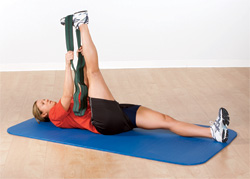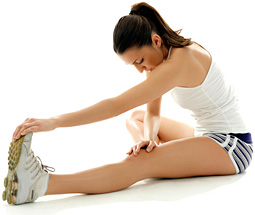Active Isolated Stretching & Strengthening
Aaron Mattes, Creator of Active Isolated Stretching, explains hows AIS works.
About AIS Stretching: Active Isolated Stretching (AIS) method of muscle lengthening and fascial release that provides effective, dynamic, facilitated stretching of major muscle groups, but more importantly AIS Stretching provides functional and physiological restoration of superficial and deep fascial planes. Utilizing a 2.0 second isotonic avoids reflexive contraction of the antagonist muscle, which creates a negative muscle memory, interrupts blood flow and allows the building up of toxins. Without activating muscle group contraction, restoration of full range of motion and flexibility can be successfully achieved while creating positive muscle memory, increasing vascular and lymphatic flow and delivering nutrients to vital tissues, muscles, cells. AIS Stretching Principals: 1. AIS Stretching overcomes the obstacle to flexibility which is the tightness of the surrounding muscles and fascia of the joint. 2. AIS Stretching incorporates repetitive isotonic muscle contractions. 3. AIS Stretching stimulates functional and physiological restoration of superficial and deep fascial planes. 4. AIS Stretching allows the target muscle to optimally lengthen (up to 1.6 time is resting length) without triggering the protective stretch reflex. 5. AIS Stretching creates mechanical, bioelectrical and bio-chemical responses that promote improved vascular and lymphatic circulation, increased oxygenation, removal of body toxins and a more efficient nervous system. 6. AIS Stretching incorporates active movement and the science behind Sherrington’s Law “Reciprocal Inhibition”: When one set of muscles contracts, muscles opposing the action are simultaneously and neurologically signaled to relax. Benefits of AIS Stretching:
|
Indy Muscle Therapy
- 8770 Guion Rd., Suite L Indianapolis, IN 46268
- 317.997.7416
- [email protected]
- Google Map
- Contact Form
Recent Posts
- Arthritis?
- 5 Tips for Active Aging
- What is NeuroKinetic Therapy?
- Active Isolated Stretching (AIS) with Aaron Mattes – YouTube
- 50% of Office Workers have Shoulder & Neck Pain
- Forward Head and Rounded Shoulders
- Postural & Muscle Imbalance
- Sway Back, Lumbar Lordosis & Pelvic Tilt
- Benefits of Kinesio Taping






